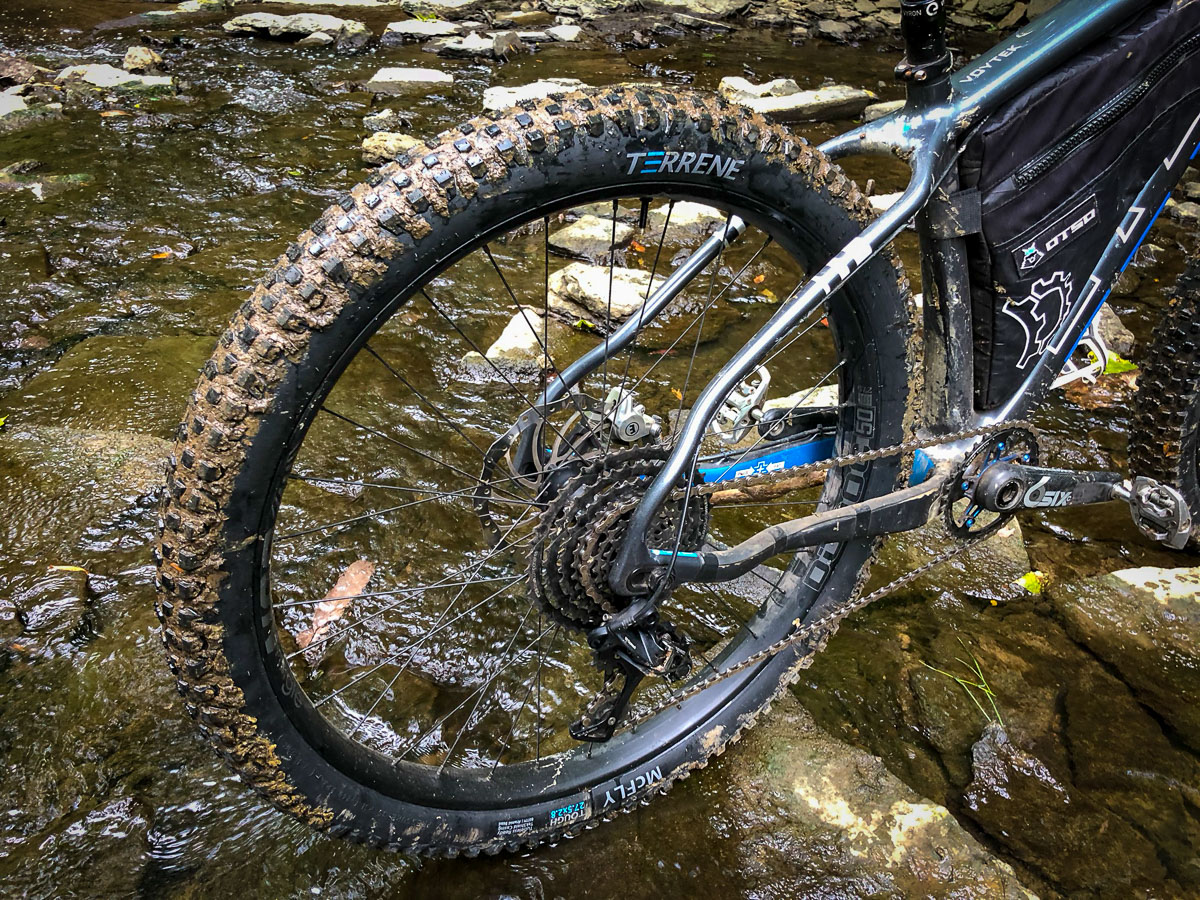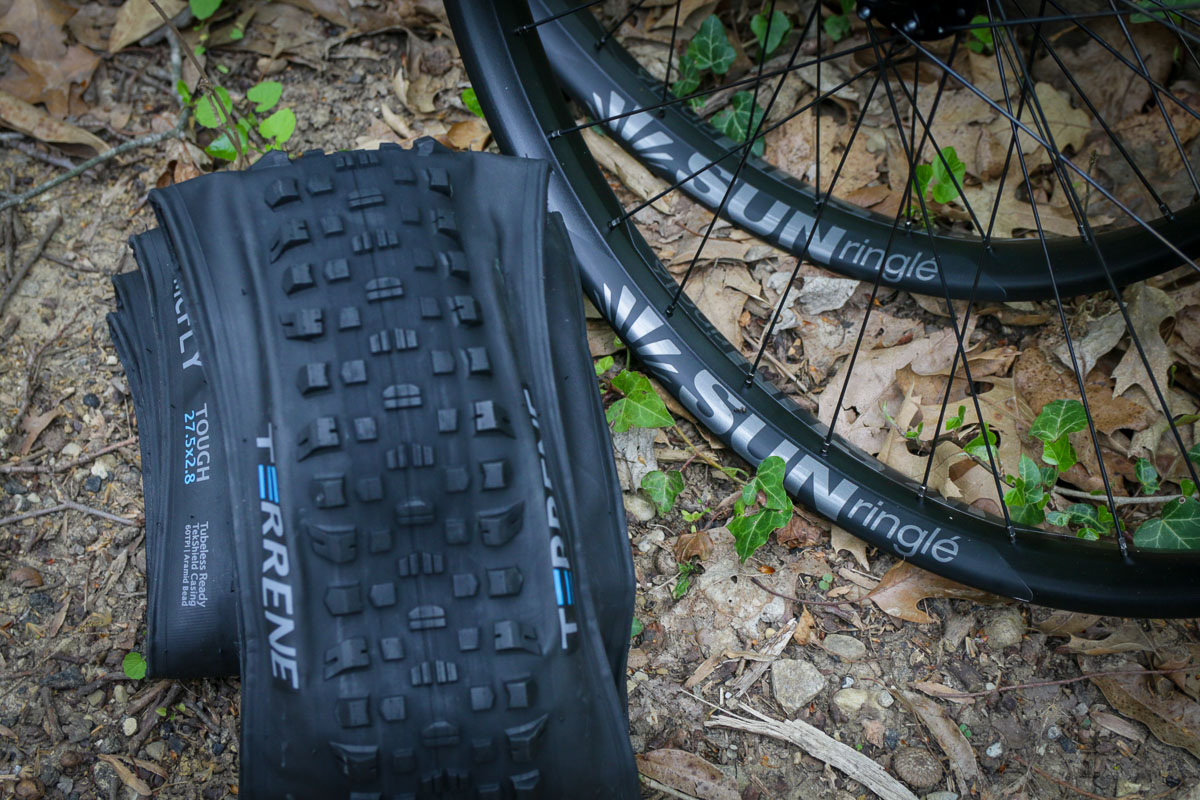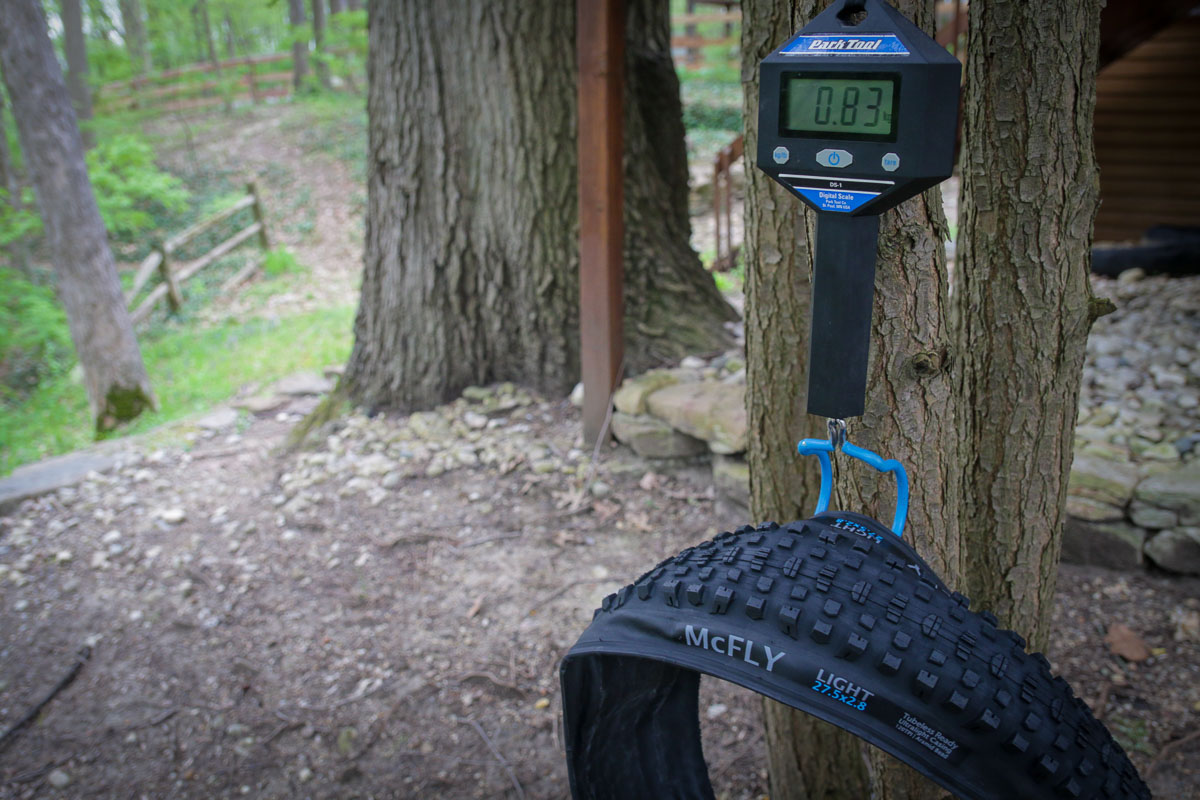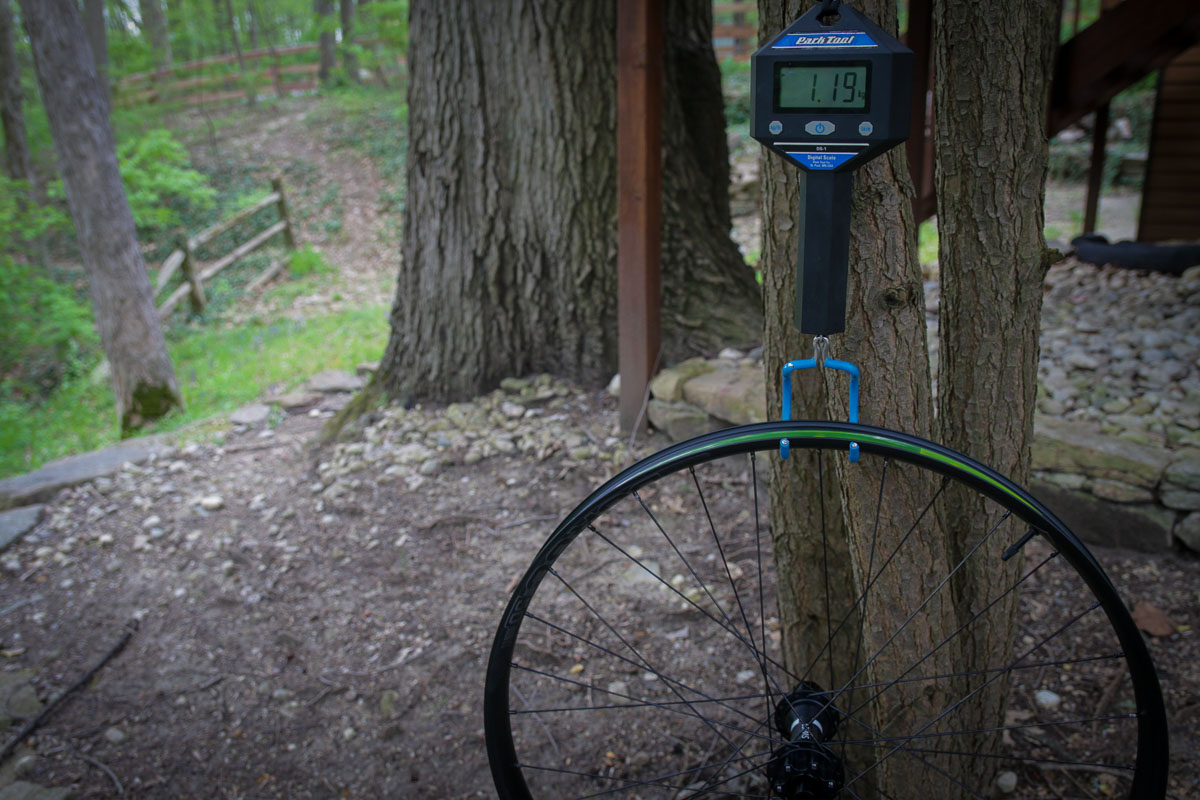Not long after the first production plus bikes started popping up, fat bikers began to experiment with plus tire sets ups of their own. The goal was pretty straight forward – extend the seasonality of your fat bike by adding narrower rims and tires better suited for summer or hardpack riding. One of the biggest hindrances however was the need for multiple, likely custom, wheelsets to make it happen. That got the folks at Otso thinking. What if you could run both plus and fat tires without changing any parts other than the tires themselves? With that, the Plus-Fat concept was born.
Truthfully, the Plus-Fat idea is less of a concept, and more of a combination of already available parts. The idea was to take a set of wide, plus bike wheels like the Sun Ringle Duroc 50 and wrap them in either 27.5 x 4.0 or 27.5 x 2.8″ tires. Same rim, two very different tire combinations. Thanks to the introduction of the 27.5″ fat bike tire, this was finally a possibility. For the average consumer, the ability to change just the tires to have essentially two completely different bikes is pretty intriguing, and something I wanted to experience for myself.
A fork in the road
What really kicked off the idea was the ability to use arguably a better, lighter suspension fork in the form of the Fox Factory F34 Plus. While the fork was never designed for use as a fat bike fork, it clears the Terrene Cake Eater 27.5 x 4.0″ tire on a 50mm rim making it a perfect addition to the build. Pro tip: when pushing the limits of any fork’s tire clearance, always make sure to check the tire clearance at full compression with the air removed from the fork. Just because it clears the arch, doesn’t mean it won’t hit the crown on bottom out.
However, before this review even got off the ground, we got word that the fork has been discontinued for aftermarket or OEM (for Otso at least) sales. Which is a shame, since it was one of the best features of this build. Armed with a set of plus tires, the Voytek really came into its own thanks to the lighter build and improved performance of the F34 compared to the competition.
In all honesty though, this isn’t much of a surprise. The F34 Plus was built with much more tire clearance than it needed for Plus bike use, and now that the F34 29″ fork is available that will fit up to 27.5 x 3″ tires, well it’s not surprising to see it go the way of the Dodo.
But, there are still plenty of options to make this build work. First, there’s the possibility of finding one of the F34 Plus forks out there on the used market, in which case you can have exactly this set up. Otherwise, you’ll have to go with one of the dedicated fat bike forks on the market which will work just fine – only with a heavier final build.
The tires
For the sake of this build, Terrene hooked me up with the Cake Eater in a 27.5 x 4.0″ Light casing, and their McFly 27.5 x 2.8″ plus tire in a Light/Durable combo.
It’s pretty common to see tires measuring less than the claimed width, so it’s not surprising to see both tires measure less than the numbers on the sidewalls here. What is surprising is that the Cake Eater measured less than 0.1″ different than the same tire mounted to a 77mm fat bike rim. It was 3.75″ on the 77mm internal Whisky Carbon rim, and 3.67″ on the 50mm internal Duroc rim. In this case, you aren’t giving up a ton of width when mounting it on the smaller rim.
The McFly measured 2.71 meaning it’s just a smaller tire than claimed since you wouldn’t be mounting it on any bigger of a rim.

Weight wise, one of the biggest reasons to switch out the tires for the summer is the chunk of weight you’ll save. Depending on the casing, you stand to drop up to 449g per tire which is a lot of rotational and unsprung weight to be carrying around all season if you don’t have to.
The biggest change in terms of tire performance with this set up seemed to be that the Cake Eater was a bit rounder in terms of profile. In terms of aggressive riding, this was actually a bit of an improvement thanks to the tire’s willingness to carve into the turns. However, in terms of pure flotation, this was a small drawback.
The McFly on the other hand felt very sure footed, and made the Voytek feel like a true plus bike – not a fat bike riding around on plus wheels and tires. 
The wheels
Since we’re talking about the Otso Voytek Plus-Fat build here, the wheels were built to match the specs of the frame and fork. That meant a 177x12mm rear hub and a Boost 110 front hub, which isn’t exactly your average combination.
While the Sun Ringle Duroc 50 rims were the main attraction, the rest of the wheels featured a solid build with DT Swiss 350 hubs which resulted in build weights of 1190g for the rear and 1030g for the front with tubeless valves and tape installed. These are lighter than your average fat bike wheelset but not by a huge margin. However, there are plenty of ways to lighten the build if price was no object.
The ride
I’ve spent a good portion of the summer riding my Otso Voytek with both tire set ups from the beaches of South Carolina, to the greasy trails of the Midwest. Obviously, without winter testing I can’t comment on the fat bike’s abilities in the snow, but over the years I’ve gotten quite experienced with comparative testing on loose sand where traction and flotation is just as important.

There’s no denying it, the smaller, rounder fat bike tires will impact the fat bike’s flotation – but not as much as you might think. I had no problem riding through sand that was so soft it’s hard to walk through let alone ride though, only with slightly more effort on my part to keep it up right. The trade off was a bike that was faster and more agile on the rest of the ride. What you give up in flotation, you make up in speed. It still felt like the Otso, only even more efficient. It mostly felt like the same fat bike I know and love.
Surprisingly for me, the biggest change change came in plus bike form. I’ve ridden the Voytek with a few different plus tire and wheel configurations, and in terms of off road use, this was by far the best. I think a lot of that can be contributed to the improved performance and chassis of the fork up front along with the wide stance of the tires. Running the Otso Flip Chip in the shortest chainstay position, the bike truly felt like a mountain bike and not a fat bike. Of course, this is greatly influenced by the narrow q-factor of the Otso which if you haven’t checked out, you should.
Takeaway
So the million dollar question: who is this for? Ultimately, if you want to get more out of your fat bike with less space to store spare parts, this is for you. But, if you need the most flotation possible or simply don’t want to change any parts to ride all year, this is not your set up. The Plus-Fat isn’t going to replace full-fat bikes for me when the conditions warrant them, but if I was limited to one bike with one set of wheels, this is a great way to make an already versatile bike even more so.






















